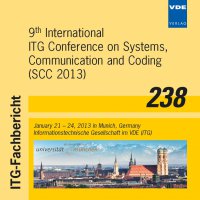A Hardware Prototype for Sub-Nyquist Radar Sensing
Konferenz: SCC 2013 - 9th International ITG Conference on Systems, Communication and Coding
21.01.2013 - 24.01.2013 in München, Deutschland
Tagungsband: SCC 2013
Seiten: 6Sprache: EnglischTyp: PDF
Persönliche VDE-Mitglieder erhalten auf diesen Artikel 10% Rabatt
Autoren:
Itzhak, Gal; Baransky, Eliahu; Wagner, Noam; Shmuel, Idan; Shoshan, Eli; Eldar, Yonina C. (Department of Electrical Engineering, Technion-Israel Institute of Technology, Technion City, Haifa, Israel)
Inhalt:
Traditional radar sensing typically involves matched filtering between the received signal and the shape of the transmitted pulse. Under the confinement of classic sampling theory this requires that the received signals must first be sampled at a rate which is twice their baseband bandwidth, in order to avoid aliasing. The growing demands for target distinction capability and spatial resolution imply significant growth in the bandwidth of the transmitted pulse. Thus, correlation based radar systems require high sampling rates, and with the large amounts of data sampled also necessitate vast memory capacity. In addition, real-time processing of the data typically results in high power consumption. Recently, new approaches for radar sensing and detection were introduced, based on the Finite Rate of Innovation and Xampling frameworks. These techniques allow significant reduction in sampling rate, implying potential power savings, while maintaining the system’s detection capabilities at high enough SNR. Here we present for the first time a design and implementation of a Xampling-based hardware prototype that allows sampling of radar signals at rates much lower than Nyquist. Index Terms — radar, sampling, Compressed Sensing, Sub- Nyquist.


